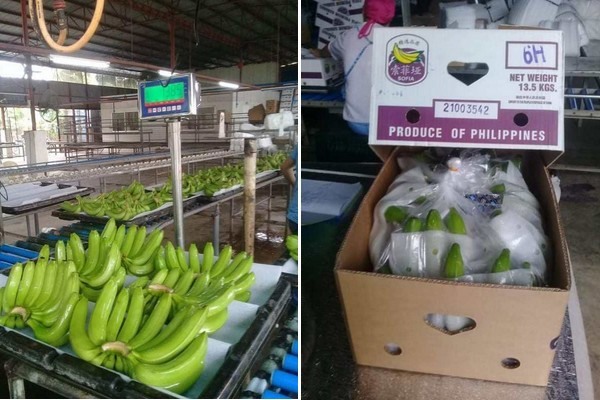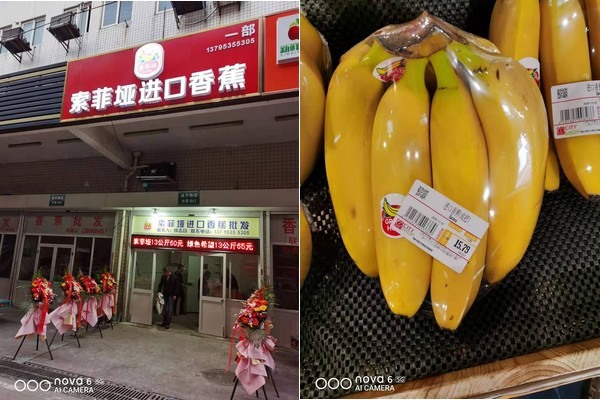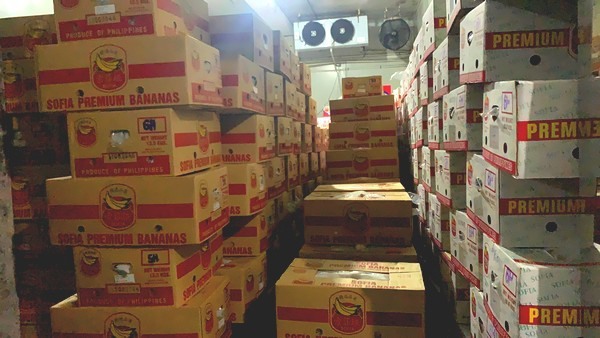Last year many imported bananas were reasonably priced but found no market. After a long period of chaos, the Chinese banana market finally began to stabilize in February. The current market supply volume is stable and the price is rising. Mr. Xia Zuxiang, board member of Shanghai Sofia International Trade Co., Ltd. recently talked about the current conditions in the Chinese market for imported bananas.

The domestic banana production recently slowed down because temperatures dropped. The supply from Hainan is a month later than last year and will perhaps enter the market as late as April or May. The import market is dominated by bananas from the Philippines, Vietnam, Myanmar, Laos, and Cambodia. The supply volumes from the Philippines, Vietnam, and Cambodia are particularly huge.
"The Spring Festival [12 February, 2021] period is generally a slow season for banana sales. Chinese consumers prefer to bring cherries and blueberries or other high-end fruits as gifts during this period, and that is why banana sales slow down. This year the situation was different. Because of the Covid-19 pandemic, Chinese people generally celebrated Spring Festival in their place of residence. They did not travel back to their hometown with fruit as gifts for family and friends.
"The residents of first-tier cities in particular remained in place. That is why the consumption volume of many fruits slightly declined. The sales of bananas, however, did not decline, but slightly increased instead. As for the price, a box of bananas from the Philippines cost around 8 USD per box of 13.5 kg on the 12th of February, and is now already more than 10 USD per box."

When asked about market trends, Mr. Xia replied, "looking at current conditions, the sales volume and price are both much better than last year, but on the same level as previous years. How the market will develop later in the season depends on the supply volumes of Vietnamese and Cambodian bananas. The supply of bananas from the Philippines is stable all year round."
"Bananas are a staple fruit. They are relatively cheap, easy to eat, and hygienic. I think that this type of fruit will do well during the pandemic. I think this type of fruit will only gain popularity during these difficult circumstances. However, as the living standards in China are rising, consumers have increasingly strict standards for the quality of their fruit. Poor-quality bananas will find the market increasingly difficult, while consumer demand for top-quality bananas grows."
"The production volumes of Southeast Asian bananas increased last year. Only in the Philippines did the production volume slightly decline. Many of the banana plantations in Vietnam, Cambodia, Myanmar, and Laos are managed by Chinese traders. Their entire harvest is destined for the Chinese market. If the Chinese banana market is depressed, then the Chinese-managed banana plantations have nowhere else to send their bananas.
"The bananas from South America and the Philippines are more flexible in terms of export destinations. The Philippines primarily exports bananas to China, Korea, and Japan. They mainly supply high-end markets. During the pandemic some of the smaller banana growers can not keep up in terms of rural capital and resources, and the product quality of their bananas is falling. Chinese importers therefore reduce their order volumes. However, the larger brands continue to supply high-quality bananas and they remain popular in the Chinese market."

"The banana industry in Cambodia rapidly developed in the last few years. Many Chinese traders invest in Cambodian banana plantations. Towards the end of last year, almost 200-300 containers full of Cambodian bananas entered the Chinese market every week. The growing supply volume of Cambodian bananas also affects other bananas in the market. South American bananas already have a higher transport cost and they feel the pressure from a growing supply of Cambodian bananas in the Chinese market. The import market for South American bananas is more flexible.
"During the pandemic, Chinese importers could easily reduce their order volume based on market developments. One of the disadvantages of South American bananas is the high price, and distribution is more complex compared to Southeast Asian bananas. The import volume has been larger than the market demand volume since the outbreak of Covid-19 early last year. Importers of South American bananas were the first to suffer financial loss."
"Sofia International Trade primarily imports green bananas. The market is quite uncertain at the moment. In order to reduce the risk and maintain a reasonable price, we began the construction of banana warehouses and adjoined drying and automated processing facilities in Nantong, Yangzhou, Suzhou, and Shanghai in September last year. We also set up stands in even more wholesale markets in first- and second-tier cities across China. Using our experience in green banana sales, we are now looking to expand into the yellow banana market. We are working hard to provide comprehensive services for the entire supply chain from the banana plantation to the retail market. Building on this foundation, we plan to maintain a stable import volume and pay even more attention to product quality and retail services despite the chaotic conditions in the Chinese banana market. We work hard to keep our clients and consumers satisfied."
For more information:
Mr. Xia Zuxiang - Board member
Sofia International Trade Co., Ltd.
Tel.: +86 13601718690
